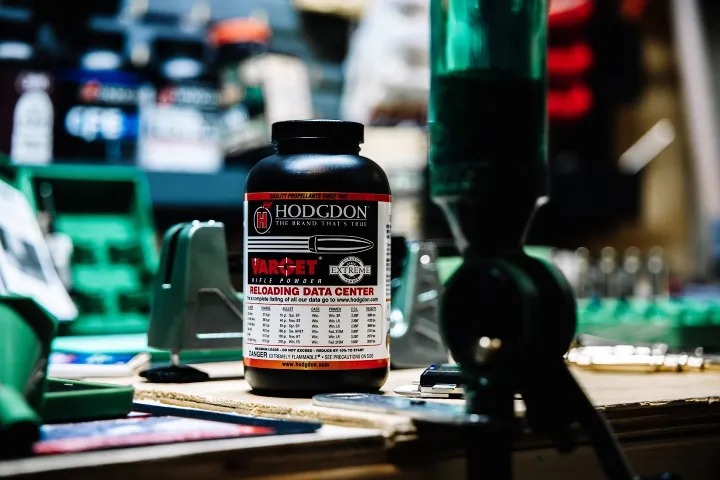A Complete Guide to Hornady Load Data for Reloaders
For anyone serious about reloading ammunition, the name Hornady is synonymous with quality and precision. For decades, Hornady Manufacturing has been a cornerstone of the shooting community, renowned for producing high-quality bullets, components, and ammunition. A critical part of their contribution is the comprehensive load data they provide, which has become an essential resource for reloaders everywhere.
Reloading your own ammunition offers a level of customization and accuracy that factory-loaded rounds often can’t match. However, this rewarding hobby comes with significant responsibility. The process of combining a cartridge case, primer, powder, and bullet requires meticulous attention to detail and, most importantly, reliable data. Using incorrect load data can lead to dangerous pressure levels, potentially damaging your firearm and causing serious injury. This is why trusted sources like Hornady are invaluable. This guide will walk you through what Hornady Load Data is, how to use it effectively, and how it compares to alternatives like Quickload.
What is Hornady Load Data?
Hornady Load Data is a detailed set of specifications and recipes for handloading ammunition. It provides reloaders with the precise measurements and component combinations needed to assemble safe and effective cartridges. Hornady invests heavily in ballistic testing to develop this data, ensuring each recipe is verified for performance and safety.
The data typically includes the following information for a specific cartridge:
- Cartridge: The specific caliber being loaded (e.g., .308 Winchester, 6.5 Creedmoor).
- Bullet: The exact Hornady bullet being used, including its weight, type (e.g., ELD Match, SST), and part number.
- Powder: A list of suitable smokeless powders from various manufacturers (e.g., Hodgdon, IMR, Alliant).
- Charge Weight: A range of powder charge weights, listed from a minimum (“starting load”) to a maximum load.
- Primer: The type of primer used in testing.
- Case: The brand of cartridge case used.
- Cartridge Overall Length (COL): The specific length of the finished cartridge.
- Velocity: The expected muzzle velocity for each charge weight, measured in feet per second (fps).
This information is available in several formats. The most traditional is the Hornady Handbook of Cartridge Reloading, a comprehensive printed manual now in its 11th edition. This book is a staple on many reloading benches. Hornady also offers this data through their official Hornady Reloading App, which provides mobile access to their extensive database and includes updates for new cartridges, bullets, and powders.
How to Use Hornady Load Data Effectively
Interpreting and applying load data correctly is crucial for safety and performance. Whether you’re a novice or a seasoned reloader, a systematic approach is key.
A Step-by-Step Guide
- Select Your Cartridge and Bullet: Find the section in the manual or app corresponding to the cartridge you’re loading. Within that section, locate the data for the specific Hornady bullet you are using. It is critical to match the bullet weight and type exactly, as different bullet shapes and constructions can affect pressure.
- Choose a Powder: Review the list of tested powders. Your choice may be influenced by availability, desired performance characteristics (like velocity or clean burning), or what you already have on hand.
- Start Low and Work Up: Always begin with the starting load. This is the minimum recommended powder charge and is the safest point to begin your load development. Never start with the maximum load, as variations in components, firearm chambers, and environmental conditions can cause pressures to exceed safe limits.
- Load a Test Batch: Load a small number of cartridges (typically 5-10) at the starting charge. Then, incrementally increase the powder charge for subsequent batches, following the increments provided in the data. For example, you might load batches at 40.0 gr, 40.3 gr, 40.6 gr, and so on, stopping well before the maximum listed charge.
- Look for Pressure Signs: As you fire your test loads, carefully inspect each fired case for signs of excessive pressure. These can include flattened or cratered primers, stiff bolt lift (in bolt-action rifles), or extractor marks on the case head. If you see any of these signs, stop immediately. Your maximum load for that specific rifle is below the charge that caused the pressure signs.
- Find Your Accuracy Node: While testing, shoot for groups to determine which powder charge provides the best accuracy in your firearm. The goal is to find the “sweet spot” or “accuracy node” where your groups are tightest, without exceeding safe pressure levels.
Tips for Reloaders
- For Beginners: Stick strictly to the components listed in the data. Do not substitute primers, cases, or powders, as this can alter pressure. Invest in a quality reloading scale and calipers to ensure your measurements are precise.
- For Experienced Reloaders: While experienced reloaders may understand the nuances of component substitution, caution is still paramount. When working with a new-to-you firearm or component, always revert to starting loads and work up. Keep detailed records of every load you develop and its performance.
Exploring Quickload as an Alternative
While printed manuals and apps from component manufacturers are the traditional sources, ballistic software like Quickload offers a different approach.
Quickload is a sophisticated computer program that predicts ammunition performance. Instead of relying solely on tested recipes, it uses a complex internal ballistics model. Users input their specific components—cartridge, bullet, powder, barrel length, and more—and the software calculates estimated pressures and velocities.
Quickload vs. Hornady Load Data
Hornady Load Data:
- Pros: Data is based on actual test firing in a controlled environment, making it highly reliable and safe when followed. The manual format is easy to use and doesn’t require a computer at the bench.
- Cons: Limited to the specific components Hornady has tested. If you want to use a bullet or powder not listed, you won’t find data for it.
Quickload:
- Pros: Offers immense flexibility. You can model virtually any combination of components, including bullets and powders from hundreds of manufacturers. It’s an excellent tool for experienced reloaders looking to optimize loads or experiment with non-standard components.
- Cons: The data is a prediction, not a tested result. Its accuracy depends on the quality of the input data and the program’s modeling. It requires a deeper understanding of internal ballistics and should be used with extreme caution. It is not a tool for beginners.
Ultimately, printed data and ballistic software can complement each other. An experienced reloader might use Quickload to explore potential loads, then cross-reference the predictions with published data from Hodgdon Load Data or other manufacturers before starting a safe work-up.
Essential Safety Precautions
Reloading is a safe hobby only when you make safety your top priority.
- Always Wear Safety Glasses: Protect your eyes from primers and other potential hazards.
- Eliminate Distractions: Reload in a quiet, dedicated space where you can focus completely on the task.
- Double-Check Everything: Verify your powder charge and cartridge overall length. A double charge of powder can destroy a firearm.
- Trust Your Gut: If something doesn’t feel or look right, stop. It’s better to discard a few components than to risk an accident.
- Follow Published Data: Do not rely on data from internet forums or word-of-mouth. Stick to professionally tested sources like the Hornady manual.
Your Blueprint for Accuracy
Reliable load data is the foundation of safe and successful reloading. Hornady provides one of the most trusted and comprehensive resources available, giving reloaders a proven blueprint for crafting accurate ammunition. By understanding how to interpret and apply this data, starting low, and meticulously observing for pressure signs, you can develop loads tailored perfectly to your firearm.
For those looking to push the boundaries of performance, tools like Quickload offer powerful predictive capabilities, but they must be used with the knowledge that they are a supplement to, not a replacement for, tested data. Whichever path you choose, a disciplined and safety-first mindset will ensure your time at the reloading bench is both productive and enjoyable.
Disclaimer:
The information provided in this article is for educational purposes only and should not be considered a substitute for official reloading manuals or professionally tested load data. Ammunition reloading involves inherent risks, and improper practices can result in firearm damage, serious injury, or death. Always follow the load data published by trusted manufacturers such as Hornady and adhere strictly to recommended components and charge weights. The author and publisher assume no responsibility for any accidents, losses, or damages resulting from the use or misuse of the information provided. Always prioritize safety, verify all data independently, and comply with all applicable laws and regulations.






